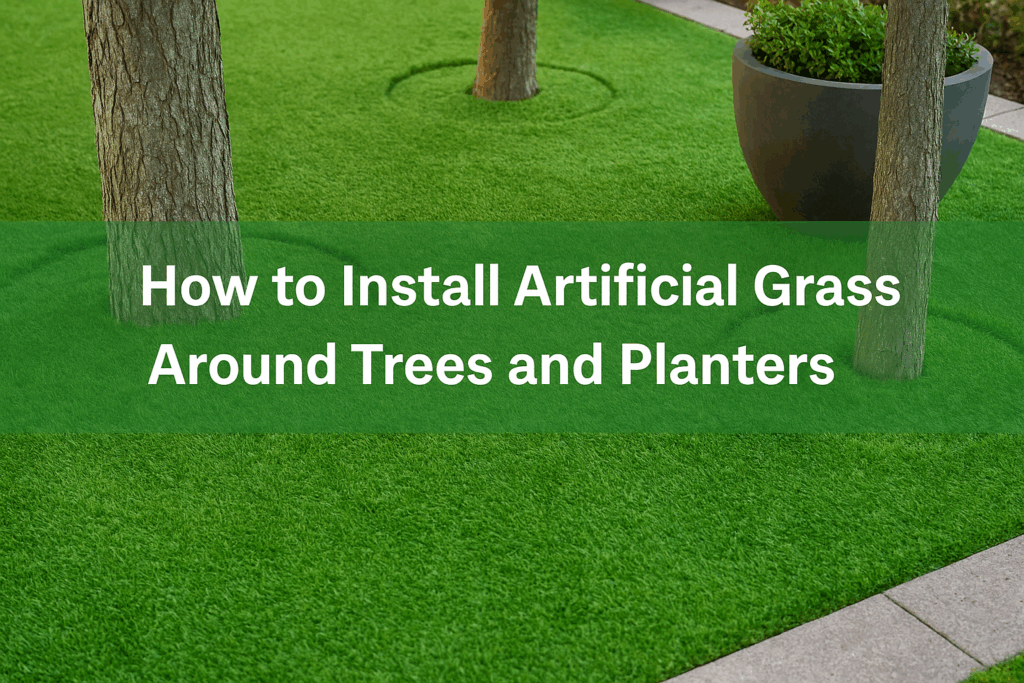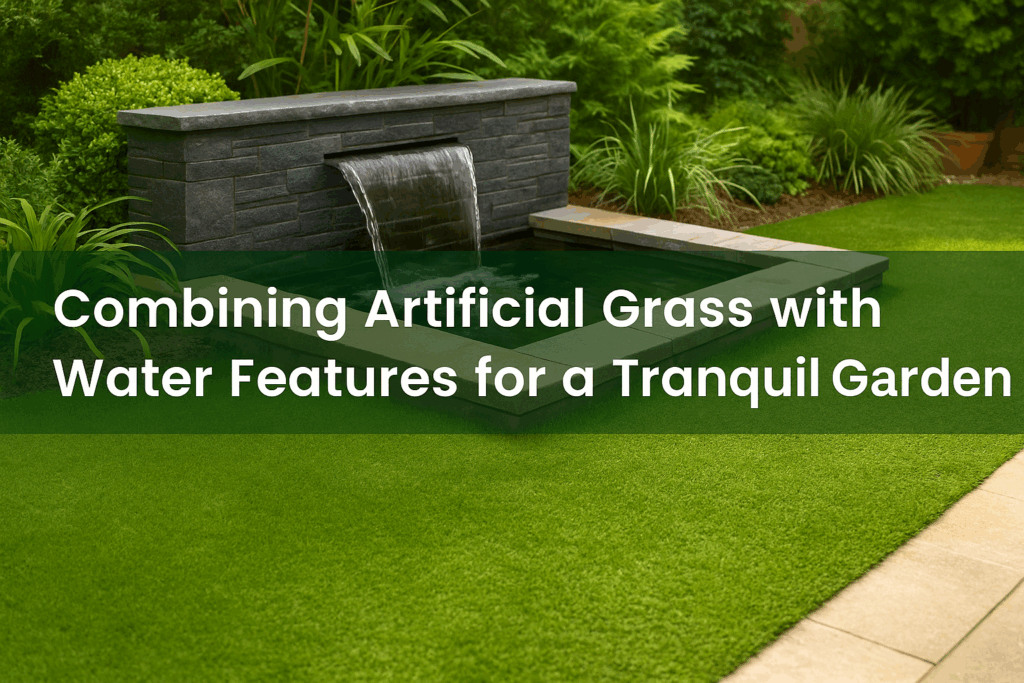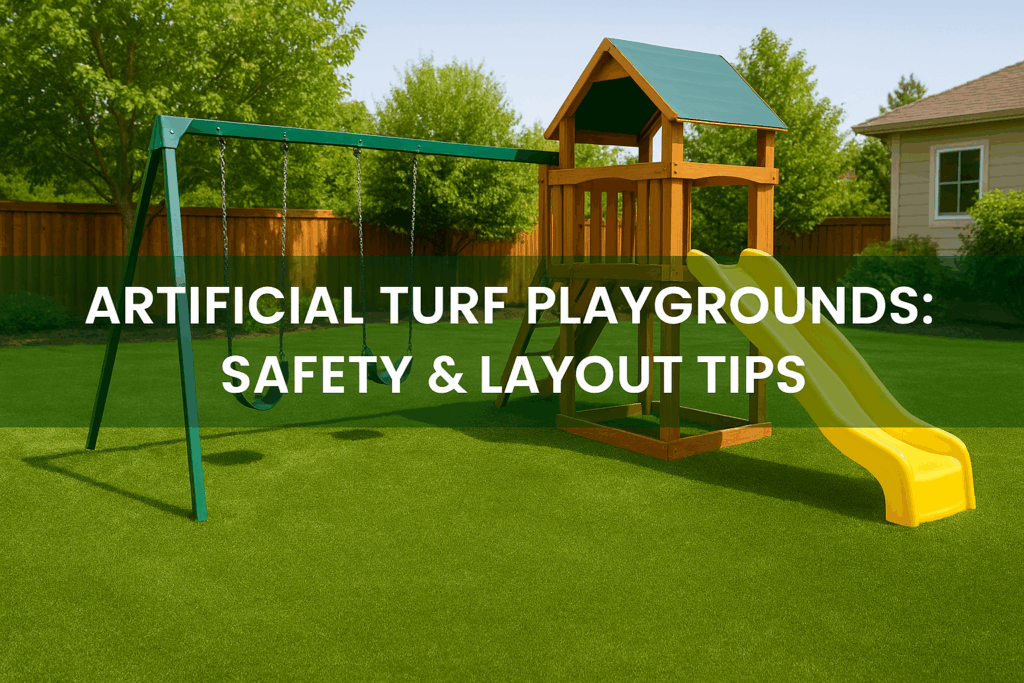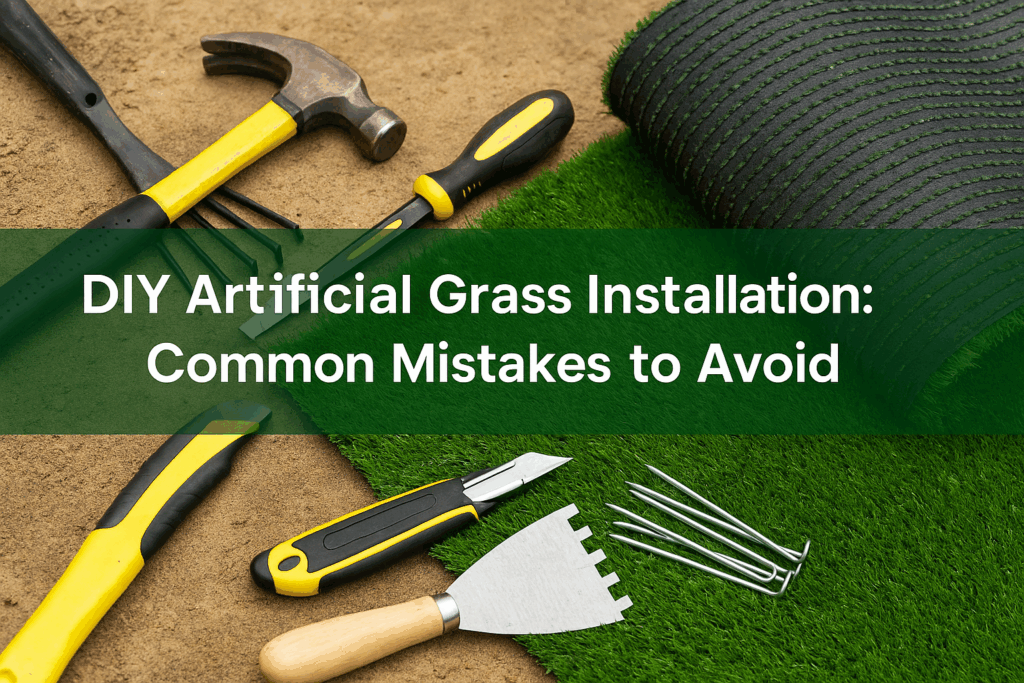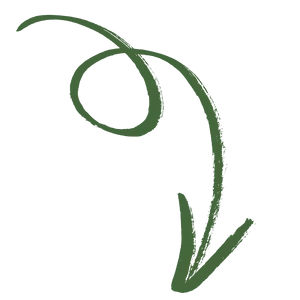Artificial turf baseball fields are becoming an increasingly popular choice for teams, schools, and communities due to their durability, cost-effectiveness, and low maintenance needs.
This guide provides comprehensive insights into the installation process, key benefits, maintenance tips, and common challenges associated with artificial turf baseball fields.
Whether you’re planning to install a new field or maintain an existing one, this guide will help you make informed decisions, maximize your investment, and ensure a safe, high-performing playing surface.
What You’ll Learn in This Guide:
- The benefits of installing an artificial turf baseball field
- Installation Process: Step-by-Step Guide
- Essential Maintenance Tips for Artificial Turf Baseball Fields
- Cost considerations and long-term savings
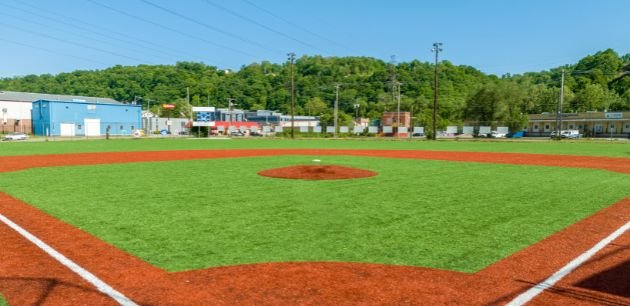
The Benefits of Artificial Turf Baseball Fields
Artificial turf offers a variety of benefits that make it an attractive option for baseball fields, including improved durability, reduced maintenance, and consistent playing surfaces.
1. Durability and Longevity
Benefit: Unlike natural grass, artificial turf is built to withstand heavy use and various weather conditions without showing wear and tear. Teams can play multiple games on the same field in one day without worrying about damaging the surface. A properly installed and maintained artificial turf field can last up to 10-15 years, withstanding high foot traffic and adverse weather conditions like heavy rain or extreme sun exposure. This makes it ideal for schools and sports complexes that host frequent games and events. Learn more about our sports-specific artificial turf solutions designed to handle demanding use and high-performance requirements.
2. Consistent Playing Surface
Benefit: Artificial turf provides a level and uniform playing surface, ensuring consistent ball bounce and player footing. This consistency helps improve game performance and reduces the risk of injuries, which is essential for both professional players and younger athletes. Unlike natural grass, which can develop patches, uneven spots, and mud during wet conditions, artificial turf maintains its integrity year-round. This minimizes disruptions to gameplay and enhances player confidence, making it a preferred surface for teams and sports programs.
3. Low Maintenance Requirements
Benefit: Artificial turf requires significantly less maintenance than natural grass, which translates into valuable time and cost savings. Natural grass fields demand frequent mowing, watering, and fertilization, often requiring hundreds of hours annually to maintain their quality. In contrast, artificial turf only needs periodic brushing, debris clearing, and occasional infill adjustments. By reducing labor needs and eliminating constant care, maintenance time can be cut by as much as 60%, freeing up resources for other priorities. Check out our DIY artificial grass installation resources for tips on easy maintenance.
4. Cost Savings Over Time
Benefit: While the upfront installation cost of artificial turf may seem high, the financial advantages become evident in the long run through reduced maintenance expenses and water savings. Reports indicate that artificial turf can save up to 50% on yearly maintenance compared to natural grass, thanks to minimal water usage and lower labor demands. Over 10 years, these savings can accumulate to tens of thousands of dollars. This benefit is particularly significant in drought-prone areas where water restrictions are common, making artificial turf an environmentally and economically smart choice.
STMA offers in-depth resources and guides on managing synthetic turf fields for optimal performance and safety.

Installation Process: Step-by-Step Guide
Proper installation is crucial to ensuring the performance and longevity of an artificial turf baseball field. A well-installed field will provide durability, consistent playability, and lower maintenance needs over time. Here’s a detailed breakdown of the installation process, along with expert tips to maximize your investment.
Step 1: Site Preparation
Clear the area of existing grass, debris, and obstacles to create a clean working space. Site preparation is key to preventing issues such as poor drainage or uneven surfaces later on. Ensure the site is properly graded with a slight slope (typically 1-2%) to allow water runoff. Address any low-lying areas before installation begins, as they can become problem spots for water pooling.
Step 2: Installing the Base Layer
The base layer provides a stable foundation and ensures proper drainage. Without a strong base, the artificial turf may experience settling or uneven patches over time. Typically, a combination of crushed stone or gravel (2-4 inches thick) is compacted to create a solid base. Use a vibratory plate compactor to compact the base evenly. Test the stability by walking across the area—there should be no soft spots or give. To improve drainage further, consider adding a geotextile fabric layer between the soil and the base material. For professional help with base preparation, consider our Do-It-For-Me installation service.
Step 3: Laying the Turf
Carefully roll out the artificial turf over the base, ensuring that the turf pieces are aligned and the seams fit snugly together. Trim excess material as needed to match the field dimensions. Allow the turf to sit in place for 24 hours before securing it. This allows the material to acclimate and prevents wrinkles. When connecting multiple turf sections, use seam tape and high-quality adhesive to create durable, nearly invisible seams.
Step 4: Infill Application
Infill materials, such as rubber granules or silica sand, provide cushioning, shock absorption, and support for the turf fibers. Infill also helps regulate temperature and maintain consistent ball movement. Distribute the infill evenly using a mechanical spreader and brush it into the turf fibers using a power broom. Apply infill in multiple layers rather than all at once. After each layer, brush the turf to ensure the infill settles evenly and prevents compaction. Monitor infill levels periodically and top up as needed.
Step 5: Final Grooming and Inspection
Once the infill is properly applied, brush the turf to lift and separate the fibers, creating a natural grass-like appearance. Conduct a thorough inspection to identify any issues, such as uneven infill distribution or loose seams.
Checklist:
- Ensure seams are secure and properly adhered.
- Check for wrinkles or bunching in the turf.
- Verify infill is evenly distributed across the field.
Conduct a water drainage test before opening the field for use. Simulate heavy rain conditions and observe how quickly water is absorbed and drained. Address any drainage issues immediately to avoid long-term damage. For further guidance, visit our Installers resource page to find local experts.
By following these steps with care and attention to detail, you can ensure that your artificial turf baseball field will perform at its best for years to come.

Essential Maintenance Tips for Artificial Turf Baseball Fields
Although artificial turf requires less maintenance than natural grass, regular upkeep is necessary to ensure optimal performance and longevity.
Neglecting these tasks can lead to problems such as uneven surfaces, compacted infill, and reduced field lifespan.
Below are key maintenance tips along with detailed explanations to help you keep your artificial turf in peak condition.
1. Regular Brushing
Prevents the fibers from matting and ensures consistent play by maintaining the upright position of the turf fibers. Use a mechanical brush every few weeks, especially after heavy use, such as tournaments or training sessions. Over time, heavy foot traffic can cause the artificial fibers to bend and become matted. Regular brushing redistributes the infill and lifts the fibers, restoring their resilience and ensuring proper ball roll and bounce. If neglected, matted fibers can affect game performance and increase the likelihood of injuries.
Pro Tip: For high-traffic areas like the pitcher’s mound or batter’s box, consider more frequent brushing to maintain playability.
2. Infill Monitoring and Top-Up
Maintain proper shock absorption, drainage, and player safety by keeping the infill at the recommended levels. Check infill levels periodically (at least quarterly) and add more as needed to avoid compaction or bare spots.The infill acts as a cushion, providing shock absorption and support for the turf fibers. When infill levels drop due to migration or compaction, the surface can become hard, increasing the risk of injuries. Regular monitoring ensures that areas subject to heavy use, such as goal areas or baselines, maintain adequate infill levels.
Pro Tip: Use a rake or mechanical broom to evenly redistribute the infill after games. Avoid adding too much infill at once, as this can cause uneven surfaces.
3. Debris Removal
Prevents damage to the turf fibers and underlying drainage systems while maintaining the field’s aesthetic appeal. Remove leaves, dirt, and other debris using a leaf blower, rake, or sweeper at least once a week.Organic debris can block drainage systems and create an environment for mold growth, which can weaken the turf structure. If debris is left unattended, it can cause staining and promote uneven wear on the field.
Pro Tip: After storms or high winds, inspect the field for any debris buildup and remove it promptly. For larger fields, consider using a power sweeper for efficient cleaning.
4. Addressing Stains and Spills
Clean spills promptly using mild soap and water to prevent permanent staining and maintain the field’s appearance. Common spills, such as sports drinks, oils, or food stains, can damage the turf if left untreated. Prompt cleaning prevents the stain from setting into the fibers and ensures that the field retains its visual appeal. Avoid using harsh chemicals, as they can degrade the fibers and infill.
Pro Tip: For stubborn stains, use a soft-bristled brush and a turf-specific cleaning solution. Conduct routine inspections to identify and address any overlooked stains before they cause permanent damage. For outdoor spaces beyond sports, consider our outdoor living solutions to complement your artificial turf setup.
By adhering to these maintenance tips, you can extend the life of your artificial turf baseball field while ensuring a safe and enjoyable playing experience for athletes.
Consistent maintenance also protects your investment, saving you from costly repairs in the long run.
This guide explores the lifespan of synthetic grass, factors affecting durability, and maintenance tips to prolong its life. For comprehensive insights, visit How Long Does Artificial Turf Last?.

Cost Considerations and Long-Term Savings
While the initial investment in an artificial turf baseball field may seem high, understanding the key cost components and long-term savings is essential for making an informed decision.
Here’s a breakdown of the major cost factors and how they balance out over time:
Initial Installation Costs
- Site Preparation: Includes grading, removing debris, and creating a proper foundation. This step typically accounts for 20-25% of the overall installation cost.
- Base Layer and Drainage: Laying a base with materials like crushed stone or gravel and ensuring proper drainage can take up 15-20% of the budget.
- Artificial Turf and Infill Materials: The largest expense, this component makes up approximately 40-50% of the cost. It includes the cost of the turf itself and the infill materials used to provide support and cushioning.
- Labor and Installation: Professional installation, including seam bonding and final grooming, accounts for 10-15% of the overall cost.
Long-Term Savings
Although the upfront costs may seem significant, artificial turf offers considerable savings in the long run:
- Maintenance Savings: Artificial turf requires significantly less upkeep compared to natural grass, eliminating the need for mowing, watering, and fertilizing. Facilities can save up to 50% annually on maintenance.
- Water Savings: With no need for irrigation, water usage can be reduced by thousands of gallons per year, especially in areas with drought conditions.
- Fewer Repairs: Artificial turf is highly durable and resistant to wear, reducing costs associated with replanting grass, filling in bare patches, or addressing mud-related issues.
Return on Investment (ROI)
Many facilities report a return on investment within 5-8 years, depending on usage and location. The combination of reduced maintenance, lower water bills, and fewer repairs often leads to significant cost recovery over the turf’s lifespan of 10-15 years.
By understanding the full cost picture, stakeholders can appreciate the long-term financial benefits of investing in an artificial turf baseball field while ensuring sustainable and consistent performance.
The NSW Environment Protection Authority (EPA) discusses the environmental implications, maintenance practices, and community considerations of using synthetic turf in sports fields.
Conclusion: Invest in a High-Performance Artificial Turf Baseball Field
Artificial turf baseball fields offer a range of benefits, from reduced maintenance to enhanced player safety and long-term cost savings.
By understanding the installation process, implementing proper maintenance, and addressing common challenges, you can ensure a high-performing field that lasts for years.
If you’re ready to install or maintain an artificial turf baseball field, contact us at Buy-Grass for expert assistance with premium artificial grass products and landscaping solutions.


